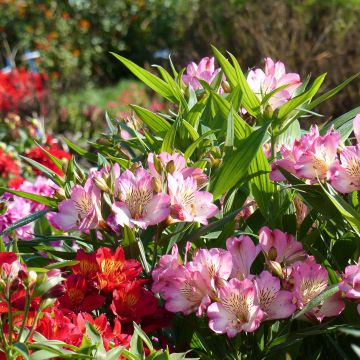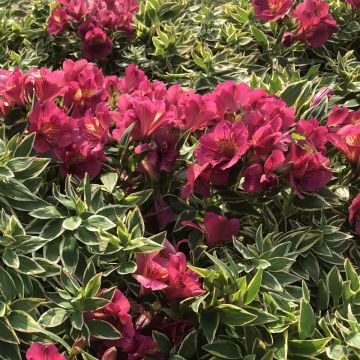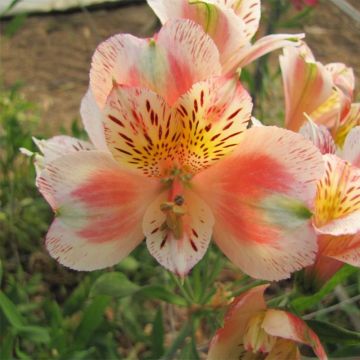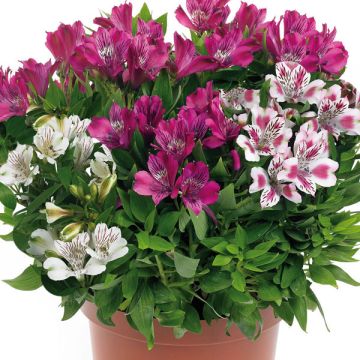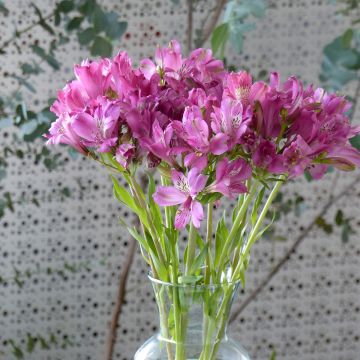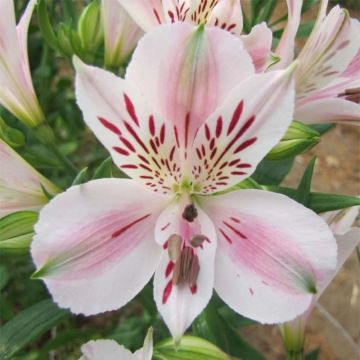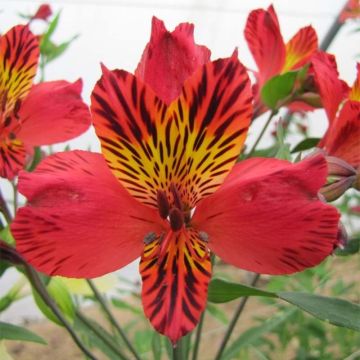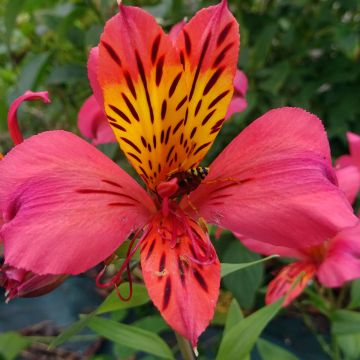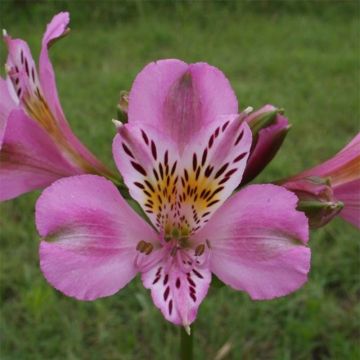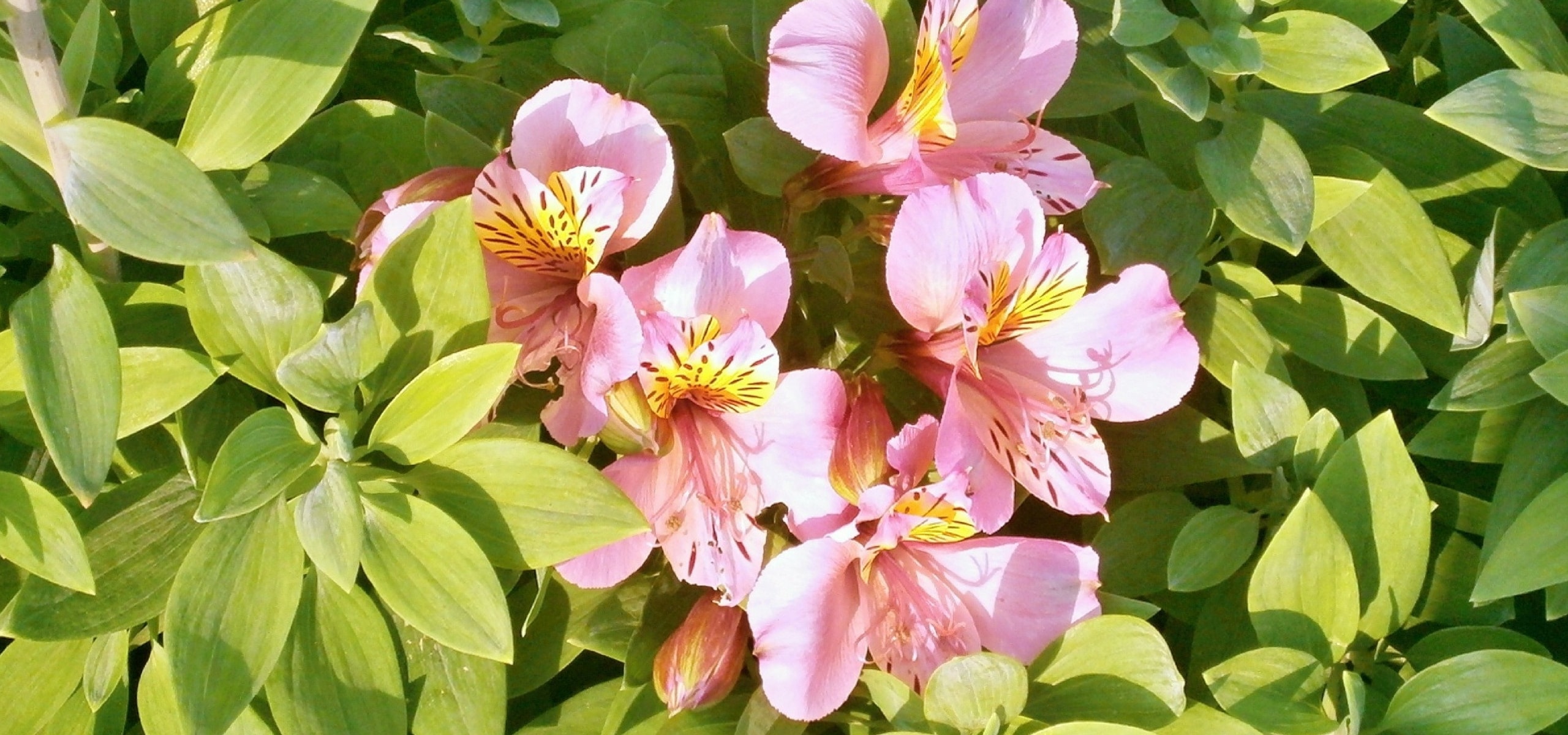
Planting Alstroemerias
When and how to plant the Inca Lily?
Contents
The Alstroemeria, commonly known as Alstroemerias or Peruvian Lilies, are perennial plants highly valued for their colourful flowers and long flowering period. Native to South America, they adapt perfectly to European gardens and add a touch of exoticism to your flower beds, borders, or even in pots on your terrace. They typically bloom from June to October-November, offering flowers in a variety of bright, vibrant colours with an exotic style. Discover all our tips on how to plant Alstroemeria to fully enjoy their magnificent flowers!
And for everything you need to know about their cultivation, feel free to check our complete guide: “Peruvian Lilies, Alstroemeria: plant, cultivate, maintain”
Where to plant Alstroemeria?
Alstroemerias love the sun, but also tolerate partial shade. A sunny exposure for at least half of the day is ideal to encourage flowering. However, avoid overly hot exposures, especially in regions with very hot summers. They prefer light, well-drained soils rich in humus. Heavy or clayey soil can lead to root rot problems. If your soil is compact, don’t hesitate to amend it with sand and compost to improve its structure and drainage. Alstroemerias need the soil to be moist when they are flowering, but dry when they are in dormancy during winter. Well-drained soil in winter will ensure better preservation than waterlogged soil. Choose their location carefully, as once planted, alstroemerias do not like to be moved!
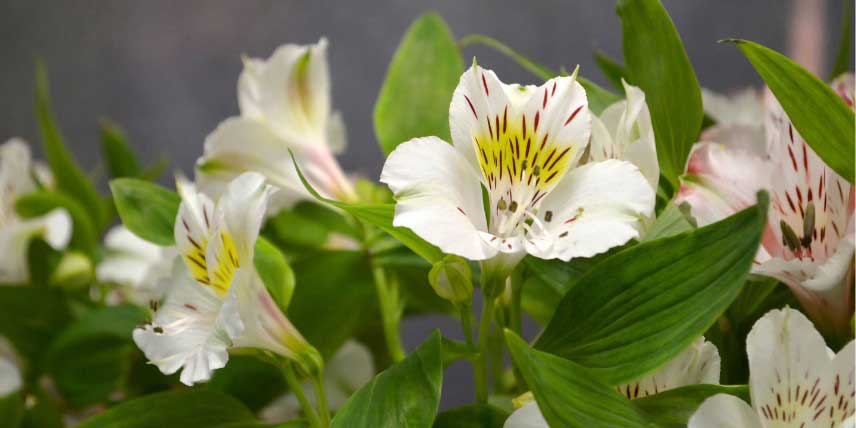
When to plant Alstroemerias?
We advise you to plant young plants of Alstroemeria in spring (April-May), as soon as there is no longer a risk of frost. This allows the plant to establish itself during the warm months, thereby maximising its growth before the arrival of the colder temperatures of autumn and winter. In regions with mild winters, planting in autumn is possible (September-October). However, in regions with harsh winters, it is better to wait until spring to plant your Alstroemeria.
Discover other Alstroemerias
View all →Available in 1 sizes
Available in 1 sizes
Available in 1 sizes
Available in 0 sizes
Available in 1 sizes
Available in 1 sizes
Available in 1 sizes
Available in 1 sizes
Available in 1 sizes
Available in 1 sizes
How to plant them?
Here are the steps to successfully plant your Alstroemerias:
- Start by preparing the soil by removing weeds and loosening the soil to a depth of about 20 cm. Add compost or potting soil to enrich the soil and improve its structure. To work your soil, you can use a hand rake, a claw, or a broad fork.
- If you are planting Alstroemerias in buckets or clumps, soak them in a bucket of water for a few minutes before planting. This will help rehydrate the roots and facilitate their establishment.
- Dig a hole about twice the size of the clump, approximately 15 cm deep and 20 cm wide. Space the holes according to the chosen variety and the necessary distance between each plant.
- Place the clump in the centre of the hole, ensuring that the collar (the base of the stem) is level with the soil. Backfill the hole with the previously loosened soil, then gently firm around the plant to ensure good contact between the roots and the soil. If you are planting several plants, maintain about 20 cm of distance between them.
- Water generously after planting to settle the soil and encourage the establishment of the Alstroemerias.
Keep the soil slightly moist during the first few weeks after planting, then gradually space out watering according to the plant’s needs and the climatic conditions. Also, consider mulching for their first winter in the ground. During flowering, water lightly and remove faded flowers to encourage the emergence of new blooms.
By following these tips, you will maximise your chances of successfully planting your Alstroemerias and enjoying their beautiful flowers for many weeks. Feel free to combine different varieties of Alstroemerias to create colourful and harmonious flower beds in your garden.
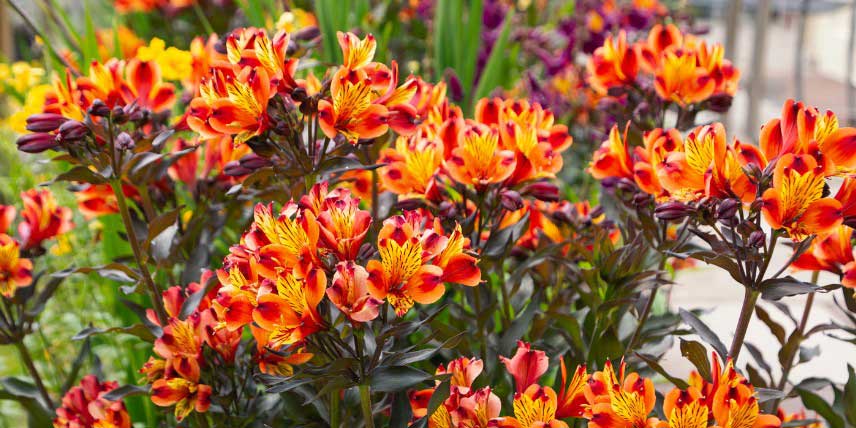
- Subscribe!
- Contents































